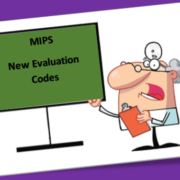Preparing for New Evaluation Codes: Get Back to the Basics
As we become more and more advanced, sometimes it is necessary to take a step back and return to the basics. Without a strong foundation, the whole building comes down. This can be widely applied to nearly every profession, sport, science, and everything in between. That being said, what are the basics of coding for patient documentation? If you practice in the US, you would most likely tell me ICD-10. Across the pond, however, they probably would default to the ICF. What’s the difference between the two?
According to The World Health Organization, the current ICD-10 can be traced all the way back to 1891, originally called Bertillon Classification of Causes of Death. As the classification evolved into the International Classification of Diseases it became a system for classifying diagnoses- for the living as well as the deceased. ICD-10 is limited in the information it can relay, however. For example, my patient’s diagnosis is E11.40: type 2 diabetes with neuropathy, unspecified. This tells me the person has diabetes and subsequent numbness and tingling, most likely in the hands, feet, or both. But how much feeling has this person lost? Can they feel nearly everything or would they step on a nail and not feel a thing? What does this patient have trouble doing that they would like to be able to do? ICD-10 tells us a diagnosis, or what condition the person suffers from, but falls short when describing the patient’s level of functionality.
ICF, the International Classification of Functioning, Disability, and Health, was first published by the WHO in 1980 to create a common language for everyone in a health-related field. It has evolved since then from a classification of “consequences of disease” to a measure of the “components of health” of a patient. (Read more about that here) What does that even mean? The ICF doesn’t tell me my diabetic patient from earlier has pins and needles in their toes, but instead it might tell me my patient has moderate trouble walking on the uneven surface of their yard, but with assistance from a cane has no trouble at all. That code might look something like this: d450.05. The ICF delves into body structure and functions, activities the patient participates in, environmental factors, and personal factors. It tells the practitioner what the functioning level of the patient is in the context of their own life. If this sounds familiar to you, it’s because the CMS adopted small parts of the ICF for Medicare Functional Reporting and the G-codes we all have learned to love (right?).
ICD-10 and ICF are intended by the WHO to be used in conjunction with one another, however as of yet those of us stateside are for the most part sticking solely with the former. There’s one more acronym to toss your way, however- CPT codes. Current Procedural Terminology codes are used to describe the interventions and procedures my diabetic patient has undergone. These are especially important for those of you that want to get paid for your work. Just as ICD-10 and ICF have evolved, the CPT codes used by rehabilitation therapists are changing at the beginning of the new year. These changing evaluation codes will affect documentation, reimbursement, and possibly much more. Visit our homepage and subscribe to Cedaron’s blog and make sure you don’t miss out on future posts on the new evaluation codes and their repercussions.
Malcolm Bond, Ph.D.








